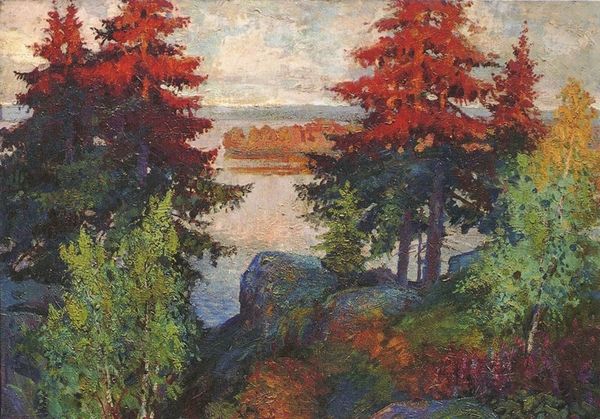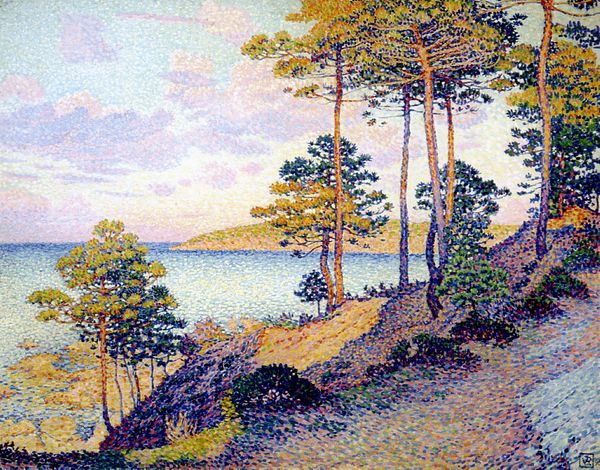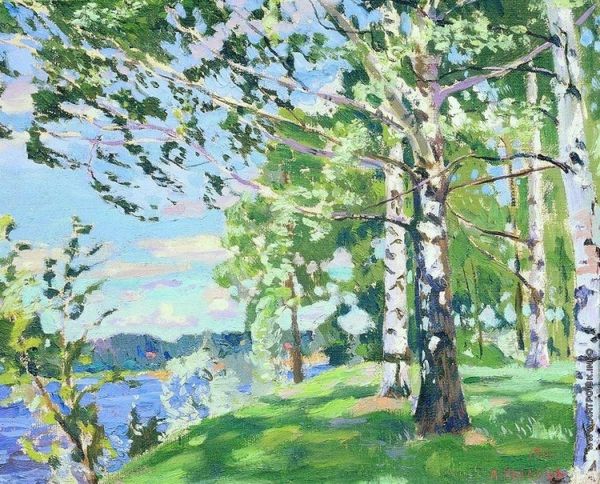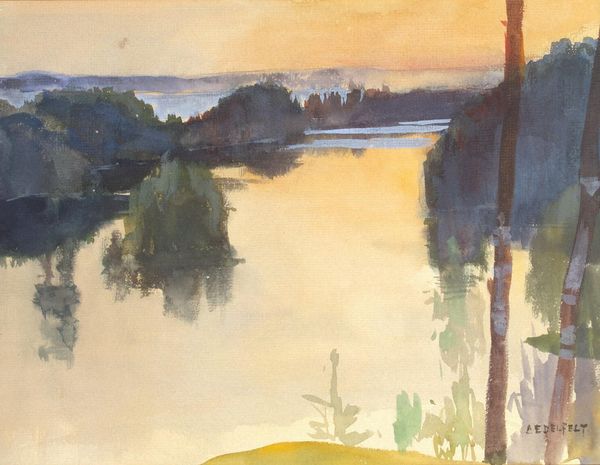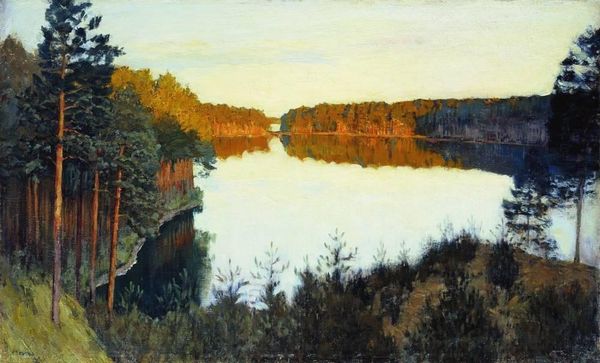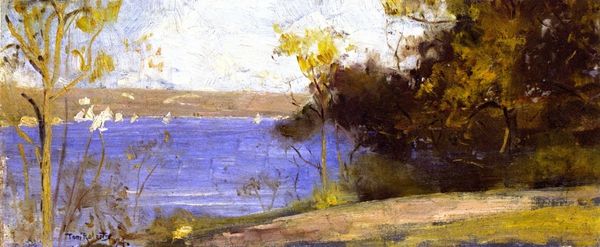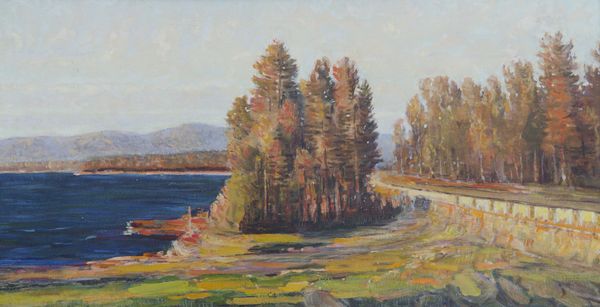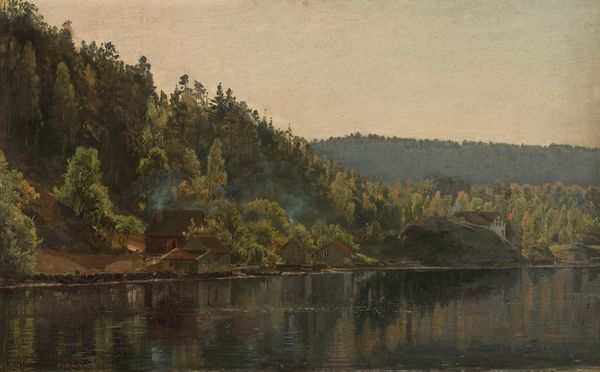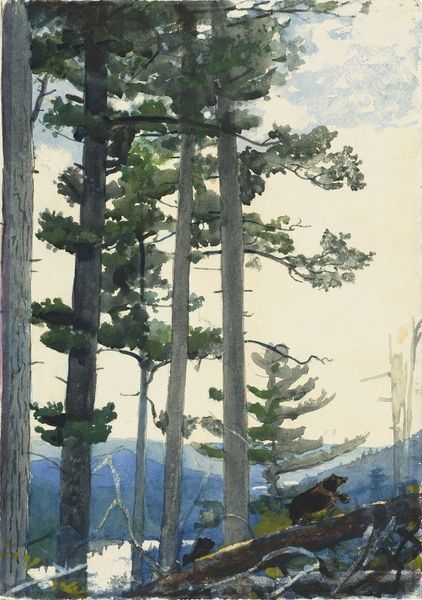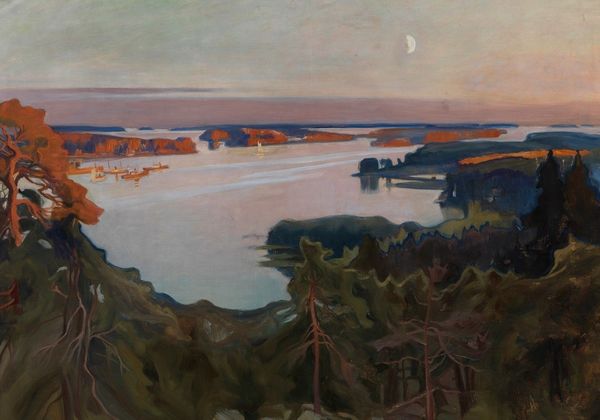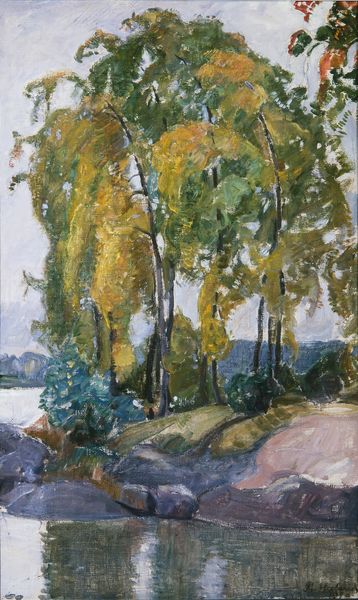
Copyright: Public domain
Curator: Here we see "Park on the Banks of the Neva," painted in 1916 by Arkady Rylov. It is a modest oil on canvas work that beautifully captures a fleeting moment en plein air. Editor: It feels incomplete somehow, doesn’t it? Like a memory blurring at the edges. The blues and greens are so muted, soft almost, especially compared to the intensity you sometimes see in Impressionist landscapes. Curator: Well, let’s consider the context. 1916, Russia. This wasn’t a period of stability. The artistic communities were shifting; traditional academic art was clashing with emerging avant-garde movements like Suprematism and Constructivism. Rylov was affiliated with the "Kuinji Society," named after a landscape painter, Arkhip Kuinji, it promoted realistic landscape painting, but was nonetheless affected by new currents. Editor: And it looks like the artist embraced the period’s atmospheric turn, but chose to apply his new vision on a well-known location like the banks of Neva River in St. Petersburg. How could we consider his position from that point of view? Curator: One might argue that, within this rapidly changing cultural landscape, Rylov used a well-established Impressionistic style combined with Realist traditions to ground himself. The subject matter is familiar and accessible. This choice could be viewed as apolitical in comparison to his peer movements which sought for radical social and aesthetic disruption. It’s interesting to note he would fully embrace revolutionary themes after 1917, however. Editor: So you’re saying, that painting this specific place with these subdued techniques can be a quiet but conscious act of preserving something precious to the painter or perhaps to the larger public, without overt political gestures? It can also be an attempt to come to terms with the changes that are about to reshape the world around him. Curator: Precisely. And thinking of the Impressionistic tradition which emphasizes individual perception, he's offering his unique experience of this park, perhaps resisting the complete upheaval of artistic tradition in Russia at that time. It speaks to the role art can play in documenting or affirming identity during great transition. Editor: It's so revealing how even a landscape seemingly devoid of overt narrative can speak volumes when we explore its creation context and stylistic choices. Makes one wonder how many other layers remain to be discovered. Curator: Absolutely. Approaching art through a historical lens and a socio-political approach not only allows a dialogue with the artist’s process but also enriches our own experience of a landscape like "Park on the Banks of the Neva"–it is an opening into a vital moment in Russian art.
Comments
No comments
Be the first to comment and join the conversation on the ultimate creative platform.
